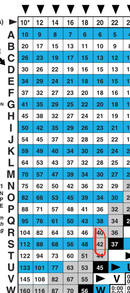Recreational diving does not require a stop. It's an optional, recommended "safety stop"; which can be omitted without much if any risk of DCS. Especially from the relatively shallow dive with a short bottom time that was described. You weren't even close to the NDL limits.
In addition, it's been almost a full day since the last dive with no symptoms that indicate decompression sickness.
Relax, you're fine.
I just have to ask. What does it matter what wetsuit was worn, if any?
Thank you for your reassurance. I just have one last question, I just checked the dive table and at the end of my first dive, I'm in the category not requiring safety stop. However, I can't recall my surface interval, I estimate it to be about 1hr and when I calculated my pressure group for my second dive, I'm in the zone that requires safety stops, total bottom time of 41min at 20m. Thoughts?




